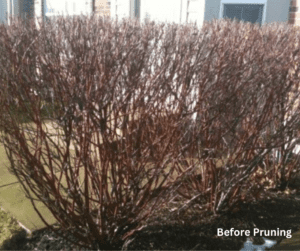Whether you own a commercial or residential property, pruning your trees and shrubs is a critical landscape task. When the branches of trees and shrubs become dense, they don’t allow light, air and nutrients to move through the plant’s canopy and its root system.
Also, branches that are crossing over and touching can rub on each other, causing the bark to wear away and produce open areas or wounds, inviting disease and insects to penetrate the plant. By thinning the overgrowth, the plant’s roots get more light and water, helping the plant to become fuller and healthier.



The best time to prune trees and shrubs
In the winter months, the plant goes dormant, which makes it the perfect time to prune because it helps to avoid shocking or stressing the plant. Also, without the leaves on the plant, weak and cross branches can quickly and easily identifies. Pruning in the winter encourages a fuller, healthier growth come spring.
The other benefit to pruning in winter is to halt the spread of any fungus or disease that may have cropped up on the tree or shrub throughout late summer or early fall. Sterilized pruning removes the unhealthy branches and keeps the disease from spreading to other limbs when the plant comes out of dormancy and begins growing in spring. Allowing air circulation and sunlight to penetrate the base will also stop the spread of disease.
However, it’s also important to note: incorrectly pruning a plant can cause damage and irreparable harm to the tree or shrub. You should always seek advice on proper pruning methods from a professional.
If you have questions regarding tree or shrub care, please don’t hesitate to reach out to us.

